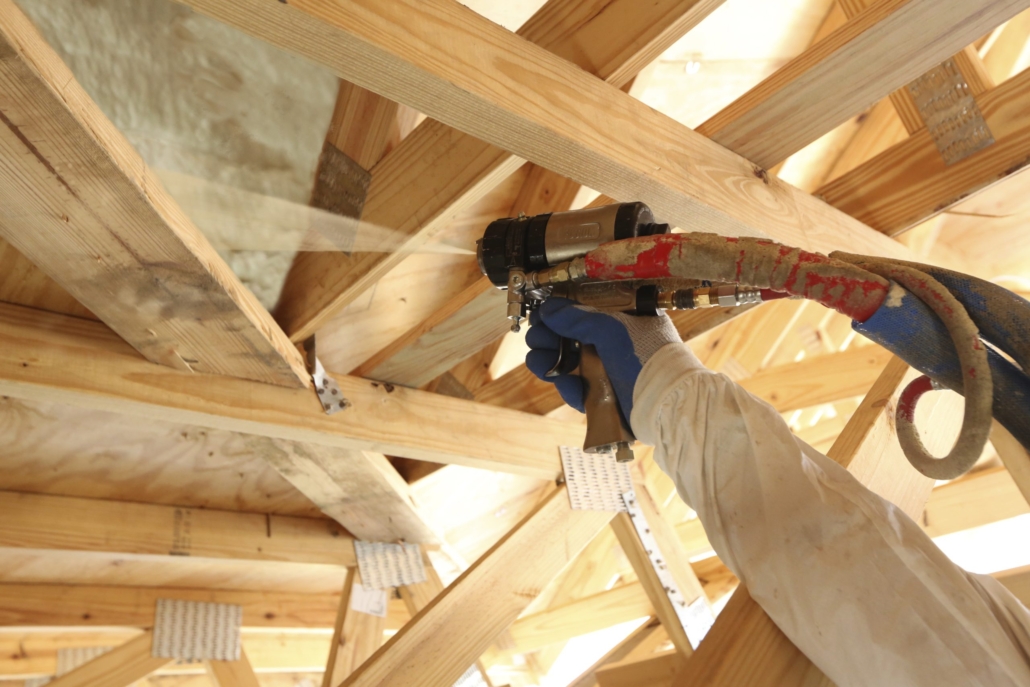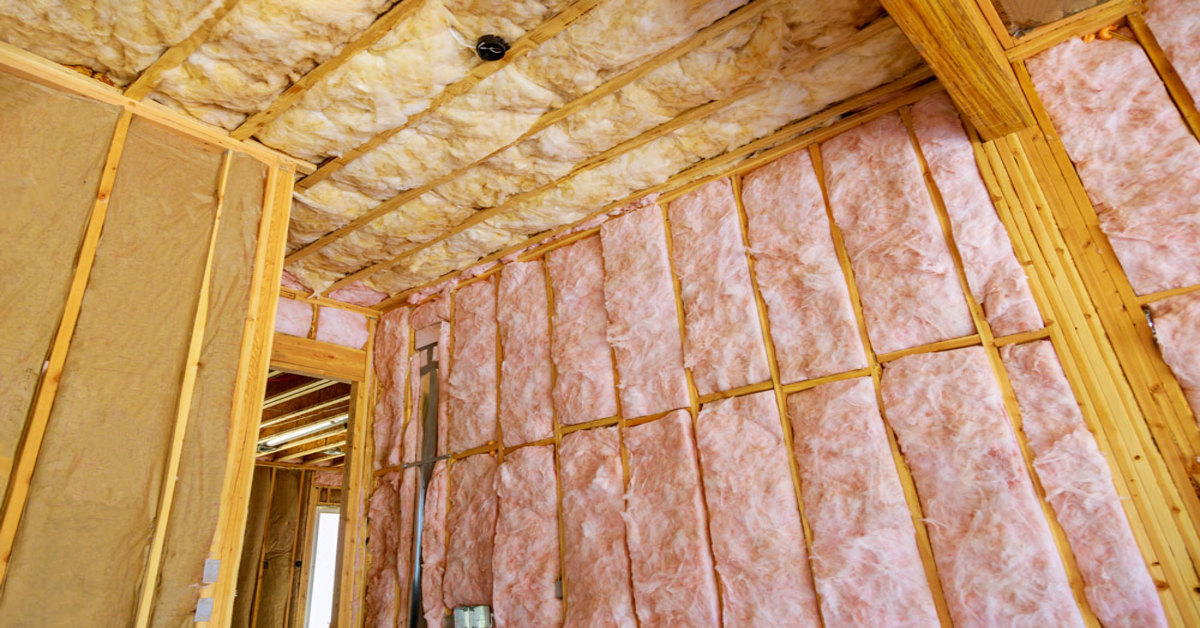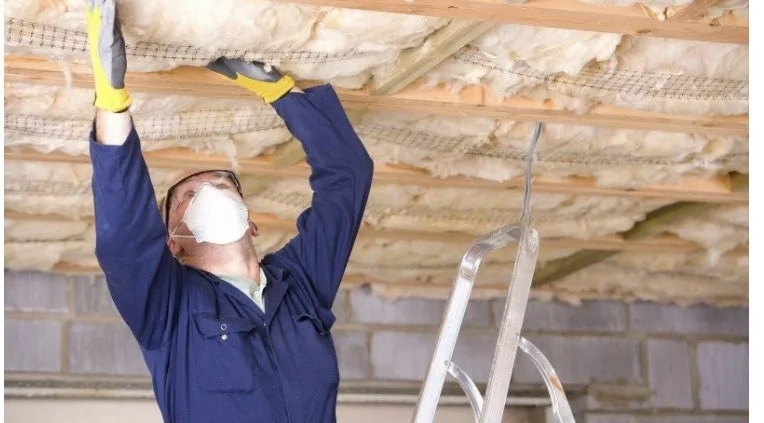How a Professional Insulation System Helps You Maintain Your Desired Temperature
A professional insulation system helps you maintain your desired indoor temperature by effectively controlling the two primary ways a home gains or loses heat: thermal transfer and air leakage. It creates a complete barrier that slows the natural movement of heat through the building’s structure, a quality measured by R-value. More importantly, a professionally installed system, particularly one using spray foam, also creates a thorough air seal. This seal stops the uncontrolled flow of air, preventing hot, humid air from infiltrating in the summer and warm, conditioned air from escaping in the winter. By mastering both of these functions, the system allows your HVAC unit to work far more efficiently, easily holding a stable, comfortable temperature year-round.
This guide will explain the science behind how a home’s temperature becomes unstable and how a modern, professional insulation system in Bellview, FL provides a comprehensive solution. The information is based on the practical knowledge of building science experts who understand that true comfort is about more than just setting a thermostat.
The Constant Battle of Heat Transfer
Heat is always trying to move from a warmer place to a cooler place. This is a fundamental law of physics. In the winter, the heat inside your home wants to escape to the cold outdoors. In the summer, the intense heat outside wants to get into your cool, air-conditioned living space. This movement happens right through the solid materials of your home’s walls, roof, and floor.
Understanding R-Value
An insulation’s job is to resist this flow of heat. Its effectiveness at doing so is measured by its R-value. The higher the R-value, the better the material is at slowing down heat transfer. A home with a low R-value is like wearing a thin t-shirt in winter; heat passes right through. Conversely, a home with a high R-value is akin to wearing a thick winter coat, effectively trapping heat and keeping you comfortable.

The Bigger Problem: Air Leakage
While R-value is important, it only addresses part of the problem. In many homes, the bigger issue is air leakage. The average house is full of tiny, unsealed gaps, cracks, and penetrations. When added up, these small leaks can be equivalent to leaving a window open all the time.
How Leaks Undermine Your Comfort
In locations with hot, humid summers, air leakage is a constant source of discomfort. During the long, hot summers, these leaks allow hot, humid outdoor air to pour into your home. This forces your air conditioner to work constantly, not only to cool the air but also to remove the massive amount of incoming humidity. This is why a leaky home often feels damp and sticky, even when the AC is running. No amount of traditional insulation, like fiberglass batts, can stop this air movement. The hot air just passes right through and around it.
How a Professional System Addresses Both Issues
A professional insulation system is designed to create a complete, integrated barrier that controls both heat transfer and air leakage at the same time.
A Continuous Thermal Barrier
A professional installation ensures that the insulation material forms a continuous layer without any gaps, voids, or compressed spots. When installing batt insulation, for example, a skilled technician will carefully cut the batts to fit perfectly around pipes, wires, and electrical boxes. Any gaps in the insulation act like a hole in a winter coat, creating a cold spot and reducing the effectiveness of the entire wall.
The Power of an Air Barrier
This is where spray foam insulation truly excels. Because it is applied as a liquid, it expands to fill every single crack and crevice, no matter how small or irregular. It adheres directly to the building materials, creating a single, solid, monolithic barrier that is both a high-R-value insulator and a near-perfect air seal. This stops hot, humid air infiltration in its tracks, which is the key to maintaining a cool, comfortable, and dry indoor environment in a Florida home. The thermal image below visually demonstrates how conditioned air escapes through unsealed gaps.

Here is a comparison of how different insulation types perform:
| Insulation Type | Heat Transfer Control (R-Value) | Air Leakage Control | Best Use for Temperature Stability |
|---|---|---|---|
| Closed-Cell Spray Foam | Excellent (High R-Value) | Excellent (Seamless Air Barrier) | The most effective single-product solution. |
| Open-Cell Spray Foam | Good (Moderate R-Value) | Excellent (Seamless Air Barrier) | Great for air sealing and sound control. |
| Fiberglass Batts | Good (Moderate R-Value) | Poor (Does not stop air) | Requires separate, meticulous air sealing to be effective. |
| Blown-in Cellulose | Good (Moderate R-Value) | Fair (Reduces some air movement) | Better than batts for filling odd-shaped cavities. |
Bonus Tip: Don’t overlook the attic hatch. A major source of air leakage and heat gain often overlooked is the attic hatch. Even in an otherwise well-insulated attic, an uninsulated and unsealed hatch can significantly contribute to discomfort. A professional can ensure the hatch itself is properly insulated and weather-stripped to complete the thermal envelope.
The Result: A Stable Indoor Environment
When a home has a continuous thermal barrier and is properly air-sealed, the difference in comfort is immediate and dramatic.
Less Work for Your HVAC System
With the home’s outer shell now effectively holding the conditioned air inside, the HVAC system’s job becomes much easier. It can reach the desired temperature quickly and then shut off for long periods. These shorter, less frequent run times not only save a huge amount of energy but also reduce the wear and tear on the equipment, helping it last longer.
Eliminating Hot and Cold Spots
A professional insulation system creates an even temperature throughout the house. The drafts that used to come from the outlets are gone. The room over the garage is no longer ten degrees hotter than the rest of the house. This consistent, stable temperature is the true definition of a comfortable home.
Bonus Tip: Consider a conditioned attic in warmer climates. In regions like Florida, a highly effective strategy for temperature control is to create a “conditioned” or “unvented” attic. This involves applying closed-cell spray foam directly to the underside of the roof deck, preventing the attic from becoming a 140-degree oven and dramatically reducing the heat load on the entire house and the HVAC system.
Things to Consider Before Upgrading
- A Whole-Home Approach: For the best results, think of your home’s insulation as a complete system. The attic, walls, and foundation or crawl space all need to work together. A professional can help you prioritize which areas will give you the biggest return on your investment.
- The Importance of Professional Installation: The performance of any insulation material is only as good as its installation. This is especially true for creating an effective air barrier. It is a job that requires skill, attention to detail, and the right equipment.
- Your Home’s Specific Needs: Every home is different. The right insulation strategy will depend on the age of your home, its style of construction, and your specific comfort and budget goals.
Questions About Temperature Control
Why are some rooms in my house always hotter or colder than others?
This is almost always due to a combination of poor insulation and air leakage in the walls or ceiling of that specific room. It is also common in rooms that are located over uninsulated spaces like a garage or a porch.
Will new windows solve my temperature problems?
While old, leaky windows can be a source of discomfort, they are usually a much smaller part of the problem than a poorly insulated attic or leaky walls. In most cases, you will get a much bigger improvement in comfort and energy savings by investing in air sealing and insulation first.
How can I tell if my home is leaky?
You can often feel the most obvious leaks as drafts around windows, doors, and electrical outlets on a windy day. Another sign is a home that feels dusty all the time. For a more scientific answer, a professional energy audit with a blower door test can measure your home’s exact air leakage rate.
Final Thoughts on Lasting Comfort
Maintaining your desired indoor temperature hinges on creating a home that works synergistically with your HVAC system, rather than against it. A professional insulation system provides the critical control needed to keep your home truly comfortable and energy bills manageable. By establishing a comprehensive thermal and air barrier, it empowers you to command your indoor environment, ensuring a consistently stable and pleasant temperature in every room, throughout the year.
Get a Professional Comfort Assessment
If you are tired of battling your thermostat and contending with rooms that are never the right temperature, the crucial first step is to obtain a professional evaluation. An experienced insulation contractor can pinpoint the vulnerable areas in your home’s thermal envelope and design a tailored system to deliver the comfort and stability you seek. For homeowners in the Bellview area, the team at Prestige Insulation Solutions offers expert consultations. They can be reached by email at prestigeinsulationsolutions@gmail.com or by phone at (850) 429-4969.
Author: Rene Zamarripa, spray foam installer and owner, began in the insulation industry in 2008 with Key Insulation in San Antonio. After 17 years of hands-on experience, now owns a successful insulation company with aspirations to franchise. Knowledgeable in R-values, insulation processes, and various components used in both residential and commercial applications. Experienced in identifying the right insulation solutions for different structures, including spray foam, fiberglass, and cellulose. Trained in operating spray foam rigs, managing temperature and pressure settings, ensuring proper material mix, and following safety standards. Understands the technical and practical skills required to deliver consistent, high-quality insulation and guide others in the trade.
Reviewer: With over 13 years in spray foam insulation, Benjamin Lee reviewed this content and offered feedback aimed at helping growing businesses connect with local homeowners and commercial clients more effectively.



Leave a Reply
Want to join the discussion?Feel free to contribute!